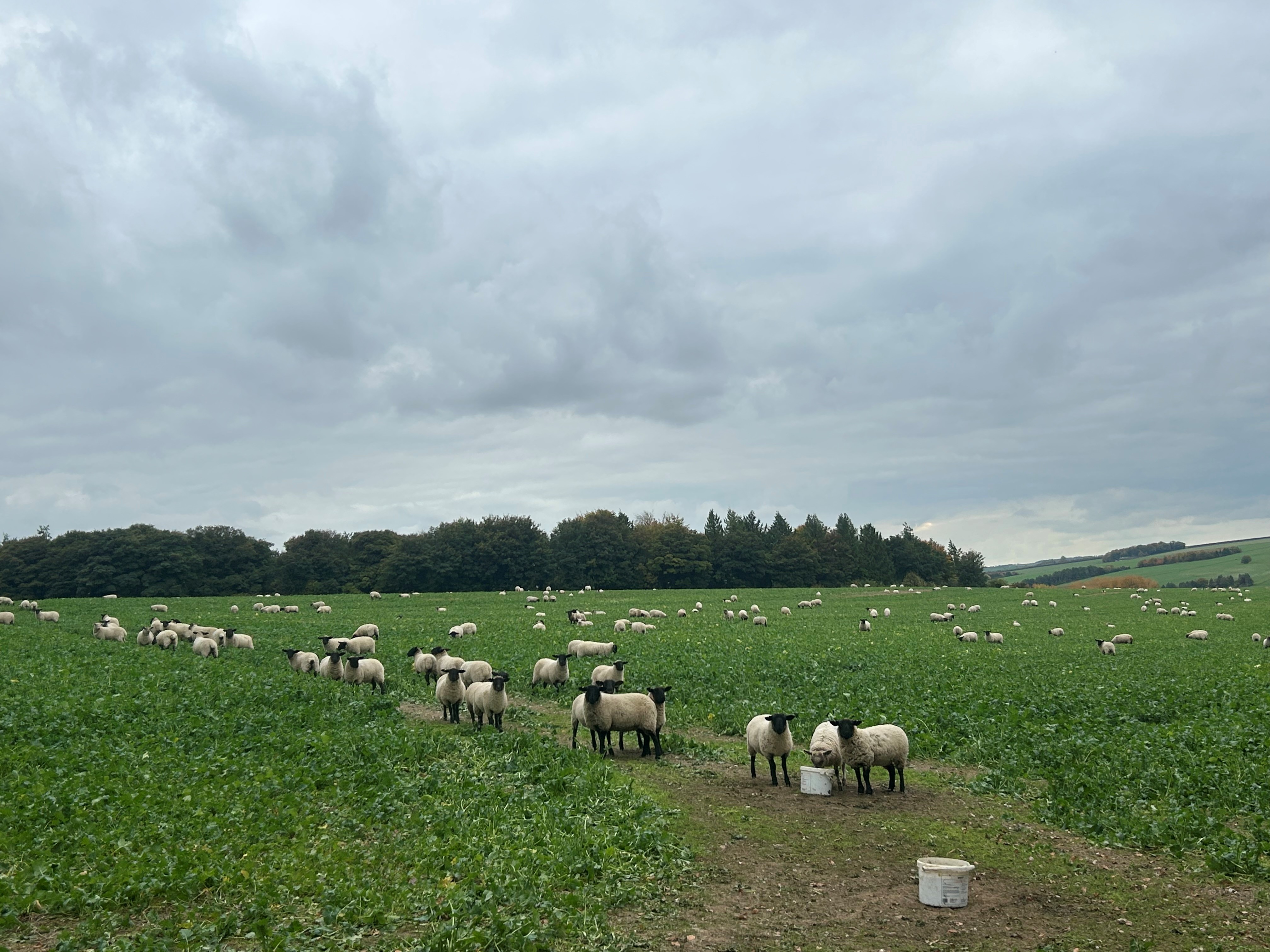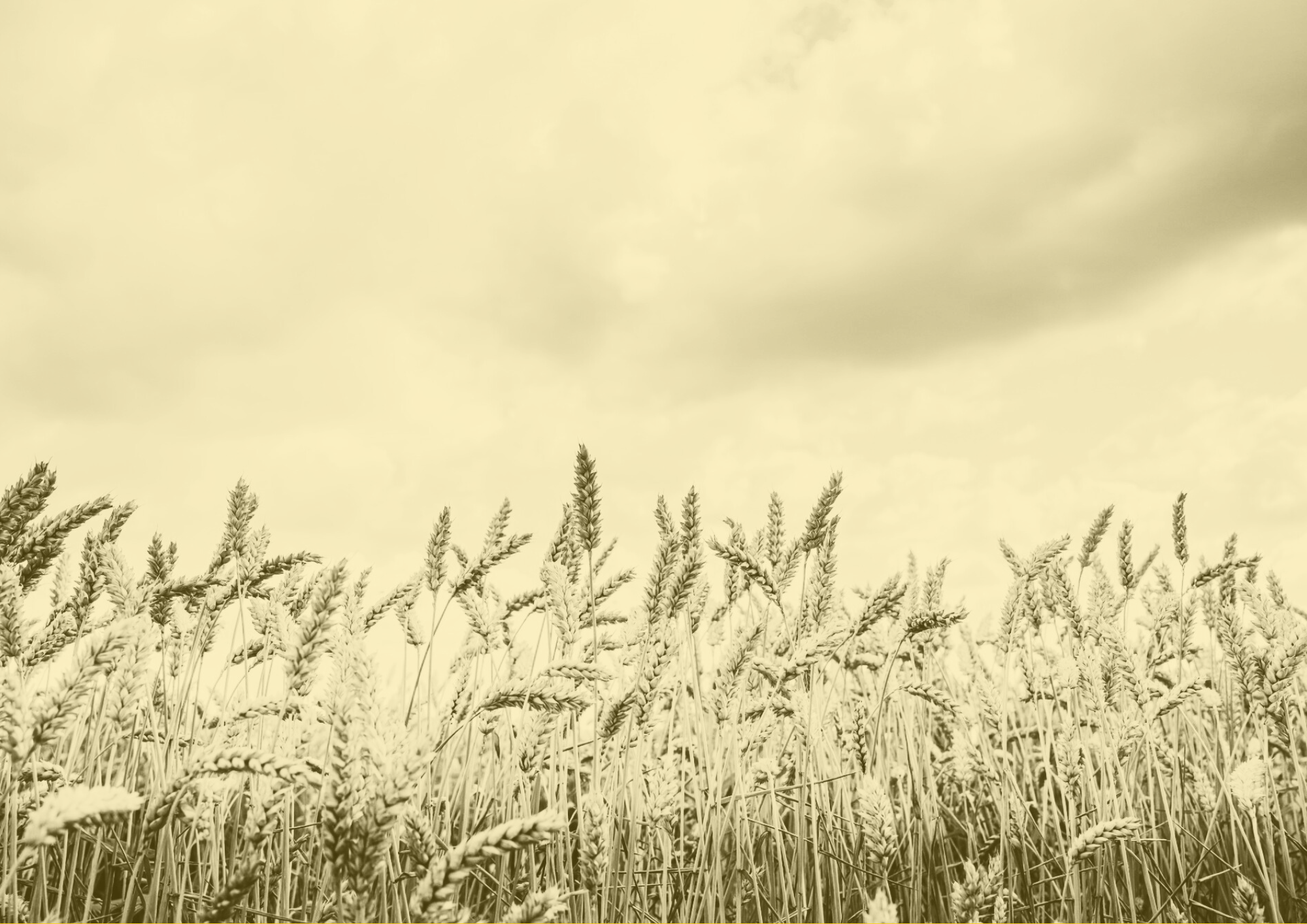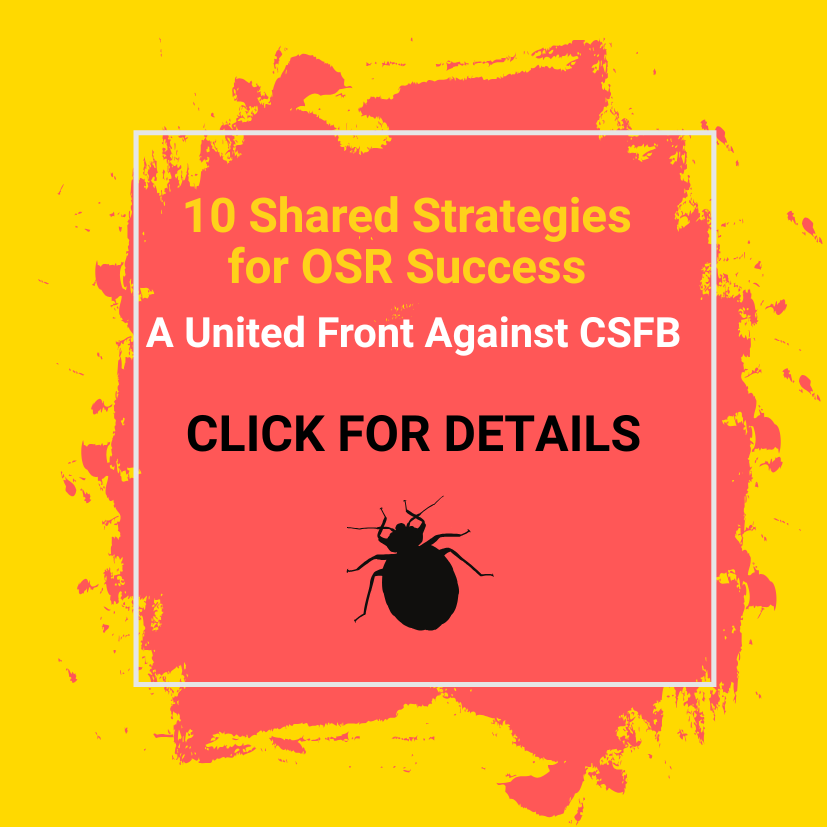Grazing OSR with Sheep – Lessons from Wiltshire Farmer Josh Stratton
At East Farm, near Warminster in Wiltshire, arable farmer Josh Stratton has been exploring how sheep grazing can fit into an oilseed rape (OSR) system. His aim: to test whether well-timed grazing can help manage cabbage stem flea beetle (CSFB), even-up crops, and ultimately protect yields.
Running 1,800ha, with around 1,400ha in arable cropping, Josh’s farming system already has a strong environmental focus – integrating pasture, forestry, and a low-intensity beef herd alongside a diverse seven-year arable rotation.
“We’re very focused on biodiversity, soil health and clean water,” Josh explains. “We’ve built an intensive programme of environmental uplift, but whatever we do has to work agronomically. It’s about the crop first – then the wider benefits.”
Why Try Grazing OSR?
Like many growers, Josh has been searching for practical ways to combat CSFB pressure without relying on insecticides. Grazing sheep offered a biological tool that might reduce larvae levels while also helping manage forward crops.
“We first tried grazing in autumn 2023 when the crop was very forward and flea beetle pressure was high,” says Josh. “We grazed at different intensities across one field and counted larvae numbers. The harder it was grazed, the fewer larvae we found – and those crops went on to yield better. It was a clear benefit.”
Encouraged by the results, he repeated the trial the following year, but the outcome was less straightforward.
“In 2024, flea beetle pressure was lower, and we grazed into December, just before the very dry spell in spring 2025. Some of the later grazed crop never really recovered – we’d gone too far that time, though the earlier grazed crops prospered.”
What the Trials Showed
Across two seasons, Josh grew 175ha of OSR, with roughly two-thirds grazed and selected areas left ungrazed for comparison.
In 2024, yield differences reached as much as 1t/ha between grazed and ungrazed areas.
“Where crops were grazed hard at the right time, yields were better,” he notes. “Sheep reduced larvae numbers and improved crop evenness. But when we grazed late or too hard in late 2024, especially going into the 2025 dry spell, recovery was poor.”

Grazing also brought some smaller agronomic gains...
1. Less lush spring growth reduced disease pressure, trimming fungicide use slightly.
2. Stronger rooting improved resilience in the right conditions.
However, Josh stresses that yield remains the deciding factor.
“If grazing compromises yield, it’s just not worth it. Saving a few pounds on fungicide is irrelevant compared with losing half a tonne of yield.”

“If grazing compromises yield, it’s just not worth it. Saving a few pounds on fungicide is irrelevant compared with losing half a tonne of yield.”

Timing Is Everything
Josh typically targets a 10-week grazing window, from early October to mid-December, but stresses the need to adapt to conditions.
“It depends on the season and the crop’s growth stage. In hindsight, we probably should have started earlier both years – but only once the crop is ready. Start too early and regrowth suffers.”
He also warns against assuming grazing adds much to soil health.
“The sheep aren’t on long enough to build organic matter, and if they’re left too long you risk compaction. The benefits are about crop management, not soil improvement.”

Extending the Approach to Wheat
Building on the OSR experience, Josh is now trialling sheep grazing in winter wheat. Working with the BYDV-resistant variety Goldfinch, he’s testing whether grazing can replace both insecticide and early growth regulation.
“We’re planting early, not using insecticide, and grazing over winter. It’s new for us, but the idea is that sheep can help manage growth, disease, and BYDV all in one go.”

Key Learnings for Other Growers
1. Find a good grazier
“You need someone reliable and responsive,” says Josh. “If they won’t move sheep on a Sunday, you’ll overgraze and lose yield. Trust and communication are everything.”
2. Get fencing and logistics right
Strong temporary fencing makes management easier. Autumn grazing doesn’t demand much water, but good stock handling and clear responsibilities are key.
3. Be clear on your objectives
“Don’t do it just because it sounds like a good idea. Know whether you’re targeting pest control, even growth, or crop regulation – and start small.”
4. Never compromise on yield
“It might look ‘regen’, but if you lose 0.5t/ha, that’s £220/ha gone. Grazing should help the crop, not hinder it.”
Looking Ahead
Josh believes grazing has potential across UK arable systems – provided the conditions and partnerships are right.
“Most arable farms have lost livestock skills, so finding a good local grazier is essential. We charge half the market rate for grazing because it’s not about the income – it’s about the crop. If grazing boosts yield, it’s worth doing. If not, leave the sheep off.”

 BEFORE YOU GO....
BEFORE YOU GO....
Give your OSR the best possible chance
The Top 10 Shared Strategies for OSR Success bring together industry insight, research, and farmer know-how from the OSR Reboot initiative. They highlight the importance of timing establishment to avoid peak CSFB pressure, prioritising soil moisture and seedbed quality, and keeping good spatial separation from previous OSR crops. Other key principles include building plant resilience, using organic matter to disguise crop scent, reducing pyrethroid use, and exploring companion or trap crops to spread risk. Together, these practical steps help growers give OSR the strongest start and build a more resilient, sustainable crop.
CLICK THE IMAGE TO VIEW THE 10 STRATEGIES
For a slightly more light hearted view of these principles and to see them from the cabbage stem flea beetle perspective CLICK HERE.

